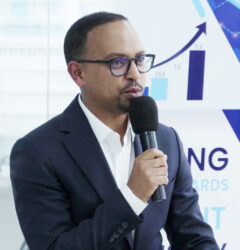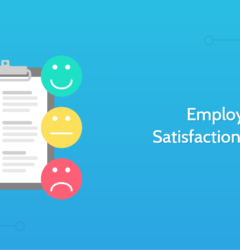14 Oct

“Our employees make us great.”
1. Recruitment Process
Recruitment is the discovering of potential candidates for actual or anticipated organizational vacancies. Or, from another perspective, it is a linking activity bringing together those with jobs to fill and those seeking jobs. The ideal recruitment effort in IE is to attract many qualified applicants who will take the job if it is offered. It also provides information so that unqualified applicants can self-select themselves out of job candidacy. Our recruitment program attracts the qualified and not attracts the unqualified. This dual objective will minimize the cost of processing unqualified candidates. We have a transparent interview session where we help candidates to visualize what it’s like to work in IE, the core values which are Strong Work Ethics and Discipline among the few, how its organized and function together on a daily basis, and paint a realistic picture so that the candidates can determine if IE is truly an environment in which they will succeed.
“First Who Then What” is a chapter in Jim Collins’s book “Good to Great” that talks about Great companies guiding the recruitment and retention principle of their people. We follow it to the heart. The other guiding book for our recruitment methodology is “Hire for Attitude” by Mark Murphy. We derive the “Don’t Apply” part of our job announcement template from this book. It is a waste of both the person’s and the company’s time and resources to hire someone just for one’s technical qualifications though who won’t be a culture fit due to the company’s minimum attitude expectations. Declaring the organization’s culture and non-negotiable values transparently and upfront on job announcements would help one make a decision even to apply or not.
2. Onboarding Process
Onboarding is the process in which new employees get acquainted with their role, their team, and the organization. In IE, we have effective onboarding practices which help employees become part of the organization and make an active shift towards contribution to organizational goals. We make sure that our new employees have the right materials to do their job well and welcome them on their first day and build valuable relationships with their teams. Each department will give induction on the first day for newcomers and make them familiarise themselves with the environment and quickly integrate them. We also make sure they are well aware of the organization’s structure, vision, mission, values, ambitious goals, key developments, policies, and culture.
The next part of onboarding is New Hire Training (NHT). Each department has a new hire training curriculum uploaded on our Learning Management System (LMS). It is usually a two weeks training program with half-day classroom and half-day practical exposure. It covers specific aspects of one’s job, process flows, and standard operating procedures. It significantly helps our new employees to understand the details of their respective jobs. They can also use the learning materials as a reference for their routine tasks throughout their stay in IE.
Every new employee is given detailed job and discipline targets on her/his first week to deliver by end of the probation period. And each will be assigned a coach until the end of the probation period or until the new employee is fully up to speed to deliver the job independently. We also have an evaluation program in the mid and final period of their probation to check their progress and help them to excel on areas that need focus.
3. Performance Management
Objectives and Key Results (OKR)
IE Network solutions Performance Management program begins with setting quarterly OKRs. It comes to setting goals and being successful; the one organization that comes to our mind is Google. Google’s OKRs are legendary and a lot of the company’s success is due to its result; it’s no secret that every company wants to emulate Google’s goal-setting method and perhaps their meteoric success as well. But when we use OKRs without realizing their purpose or objective, it makes it feel complex or unusable. However, it is possible for IE Network solution to use OKRs, just like Google, and also we achieve some measure of success by breaking down the process of goal setting by understanding every aspect of it. Having and developing our own performance management system (PMS) in our company helps our employees to stay focused and keep them engaged. And some of the benefits we get using from OKR in line with our PMS at our organization help us:-Understand and define our organization’s high-level goals, break the high-level goals into OKRs, helps align individual OKRs with company goals, helps prioritize tasks, track the progress of our employee’s goals, celebrate accomplishments and to use current goals as a benchmark for future goals.
Performance Review and Real-Time Feedback
In IE we don’t wait to review performance till the last minute to let employees know how they are doing well or are not doing well. After finalizing quarterly OKR planning employee’s performance is measured on a daily, weekly, and quarterly basis. Performance review and feedback help our employees course-correct as and when necessary, can help them fix mistakes that were holding them back, and, sometimes, it can even help them revamp their goals or increase their target by taking corrective actions immediately. The main benefits that we get from implementing performance review and real-time feedbacks is:-helps our employees stay motivated and engaged continuously, helps our leaders to monitor the performance of their employees continuously and improve it, helps in developing a two-way communication channel between employees and their managers.
Employee Rewards and Recognition
Nothing works better than rewards and recognition when it comes to motivating and engaging our employees. Some of the ways we use to recognize and reward our best-performing employees and leaders are: – Performance recognition letters, fully sponsored long weekend vacation 4days/3 nights out of the country, Company-sponsored dinner +drinks with the team, Continuous development opportunities, gift cards, and quarterly incentive for key individual performance goals (KPI) that established in accordance with the business targets of our company.
4. Exit Process
Exit or resignation is the formal act of leaving or quitting one’s office or position. In IE, we have an organized exit workflow that starts when an employee sends his/her resignation notification to the immediate manager. Nonmanagerial staffs need 1-month notice and managerial staff is obligated to give 2 months’ notice. Then managers with people person and the staff will discuss the root cause of resignation. When the manager accepts the resignation, a Checklist and target finalization will be prepared to hand over materials and tasks which helps to ease the exit process.
While the resigning staff proceeds with the finalization of the target, the people department will closely follow up on handovers of company materials and clearance with each department and start the recruitment process in place of the resigning staff so there will be a proper handover of tasks. If the resigning staff has other related payment issues, a letter will be prepared to officially notify the staff due to payments.
The next part of the exit/resignation process will be checking with finance if the payment has been settled. Then the people department will prepare the final payment, experience letter, and conduct an exit interview. Conducting exit interviews allows the resigning staff an opportunity to discuss last pay, benefits, and reasons for leaving the company, opinions of work conditions, and relationships with supervisors. After the reigning staff finalizes clearance, the company will send the employee a proper send-off in order for both parties (the company and the resigning staff) to have a positive experience regarding the environment and the company.
ACCESS THE PDF VERSION BELOW







Find Us On